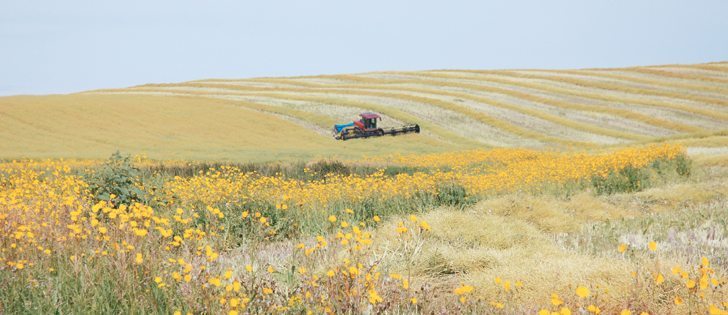Remote sensing | Crop condition assessment program shows lower potential on eastern prairies
Satellite images suggest crop yields will be decent in Western Canada, despite poor growing conditions on the eastern half of the Prairies.
Statistics Canada’s Crop Condition Assessment Program, which uses satellites to assess vegetative growth, released Western Canadian yield estimates Aug. 15.
Remote sensing experts at Stats Can are predicting average yields of:
- Canola, 34.5 bushels per acre
- Spring wheat, 40.6 bu. per acre
- Durum, 36.6 bu. per acre
- Barley, 54.1 bu. per acre
Gordon Reichert, senior scientific adviser with the Crop Condition Assessment Program, emphasized the numbers are estimates.
Read Also

Pakistan reopens its doors to Canadian canola
Pakistan reopens its doors to Canadian canola after a three-year hiatus.
“This is based on NDVI (Normalized Difference Vegetation Index) and a combination of agro-meteorological data. Temperature, precipitation… and calculation of growing degree days,” he said. “The data is up to the end of the July. It’s the mid-point of the season. The month of August is where we get a lot of the seed set, the weight of the kernel…. So there’s a lot more opportunity for these yields to improve.”
In late July the CWB released its yield estimates following a three-day crop tour of the Prairies. The CWB pegged the average spring wheat yields in Western Canada at 43 bushels per acre, canola at 34 and durum at 48.
The satellite vegetation index estimates are comparable to the CWB figures with the exception of durum, which satellite images suggest is a much lower 36.6 bu. per acre.
Reichert reiterated the estimates are based on vegetative growth at the end of July. Favourable conditions in August could push yields much higher.
Nonetheless, satellite images from the second week of August indicate that vegetative development is below normal or well below normal for most of Manitoba and a large portion of eastern Saskatchewan.
“Which is disconcerting, especially this time of the year,” Reichert said. “Based on what I’ve seen from the imagery, it looks like production is going to be affected… adversely, compared to normal or previous years.”
The lushness and greenness of vegetation in western Manitoba and eastern Saskatchewan hasn’t im-proved much over the last month. Many crops didn’t recover from 150 to 200 mm of rain that fell on the region in late June.
The vegetation index in western Saskatchewan and Alberta is above normal or normal, which should produce healthy yields.
“Alberta, for the most part, is looking fairly good,” Reichert said. “With the exception of the Peace River region.”
Reichert and his colleagues are predicting Western Canadian spring wheat production at 18.475 million tonnes, canola at 14.344 tonnes, durum at 4.675 million tonnes and barley at 5.769 million tonnes.
The figures are dramatically lower than 2013, but comparable to annual production in 2010 and 2012.
One variable this year is the amount of unseeded acres.
Bruce Burnett, CWB crop analyst, said 3.5 to four million acres of cropland went unseeded or were lost to flooding this year.
In Manitoba 985,000 acres, or more, went unseeded this year.
Heavy rains in late June likely drowned out many more acres in the western half of the province and in eastern border areas of Saskatchewan. The tally of those losses is still a matter of speculation.
















